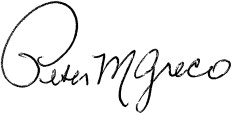Your commute to your office has followed the same route for the past 25 years. As you zigzag through your small community, you pass several dental offices including those of 3 orthodontists. Tomorrow is Thanksgiving Day, and you notice a wide banner adorned with large turkeys spanning the entire façade of 1 orthodontist’s office, stating “Give thanks today, for here is the best orthodontist in town!” A 6-foot balloon turkey is tied to the office mailbox and waves in the wind. A feeling of discomfort overtakes you as you question whether advertising defames or elevates your specialty.
The health professions have long maintained that advertising is inappropriate. Until the mid-1970s, the medical and dental specialties viewed themselves as self-regulatory. The generation of a patient base was primarily by referral from satisfied patients or trusted colleagues. Practice announcements were heralded by discreet, terse notices of specific letter height with uniform typeface in signage and stationery. Printed announcements comprised a few lines explaining the scope of practice: eg, “practice limited to orthodontics.” Framed advertisements and printed materials were to be modest in size.
By the early 1970s, the Federal Trade Commission’s (FTC) Bureau of Competition became increasingly concerned that such conservative advertising deprived consumers of useful information. The bureau’s stance was that the professions’ restrictive postures on advertising were a disservice to the public because they eliminated the opportunity for free competition.
In 1975, the Supreme Court ruled that federal antitrust laws no longer applied to the health professions. Opponents of the ruling asserted that advertising commercialized the health services and denigrated the professions, including dentistry. These people thought that the liberty afforded by advertising might result in abuse by dentists and physicians because of the temptation to emphasize service for profit rather than for the benefit of the patient.
The American Association of Orthodontists’ (AAO) and the American Dental Association’s guides to professional conduct upheld the FTC ruling by stating that advertising must be truthful, substantiating the ethical principle of veracity. They further state that no orthodontist can claim superiority over another. The AAO’s Principles of Ethics and Code of Conduct, section V, states the following:
Members shall ensure that their public statements, announcements of services and promotional activities for providing information to aid the public, patients and/or other health care providers in making informed decisions, are not false, deceptive or misleading in any material respect.
This admonition is also reflected in the American Board of Orthodontics’ (ABO) “Guidelines for the use of the diplomate title or logo” in which the ABO forbids diplomates to claim that their status renders them more skilled than nonboarded orthodontists.
As a result of the 1975 FTC ruling, the line between professionalism and commercialism in health-profession advertising is thin indeed. To transform that boundary into an unambiguous, broad demarcation, more is needed than the general guidance discussed above. It is incumbent upon each orthodontist to maintain a posture that demonstrates an aura of professionalism and respect for patients. In so doing, patients will be attracted to seek our care and yet maintain high esteem for our specialty. Truthfulness (veracity) and restraint from claiming superiority might be less elusive than the essential discretion we need to prevent us from deteriorating from a specialty to a trade.
Perhaps the most appropriate course of action in the face of another practitioner’s questionable approach to advertising is to maintain a professional posture in all forms of marketing. This means avoiding advertising techniques that denigrate, cheapen, or outwardly commercialize our specialty.
Is our colleague who displays balloons, banners, and claims of superiority at Thanksgiving exercising truth (veracity)? I don’t believe so, but, when I pass that orthodontist’s office next Memorial Day, I truly hope that the only banner he displays is the Stars and Stripes!





